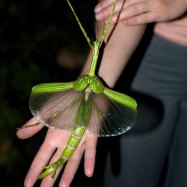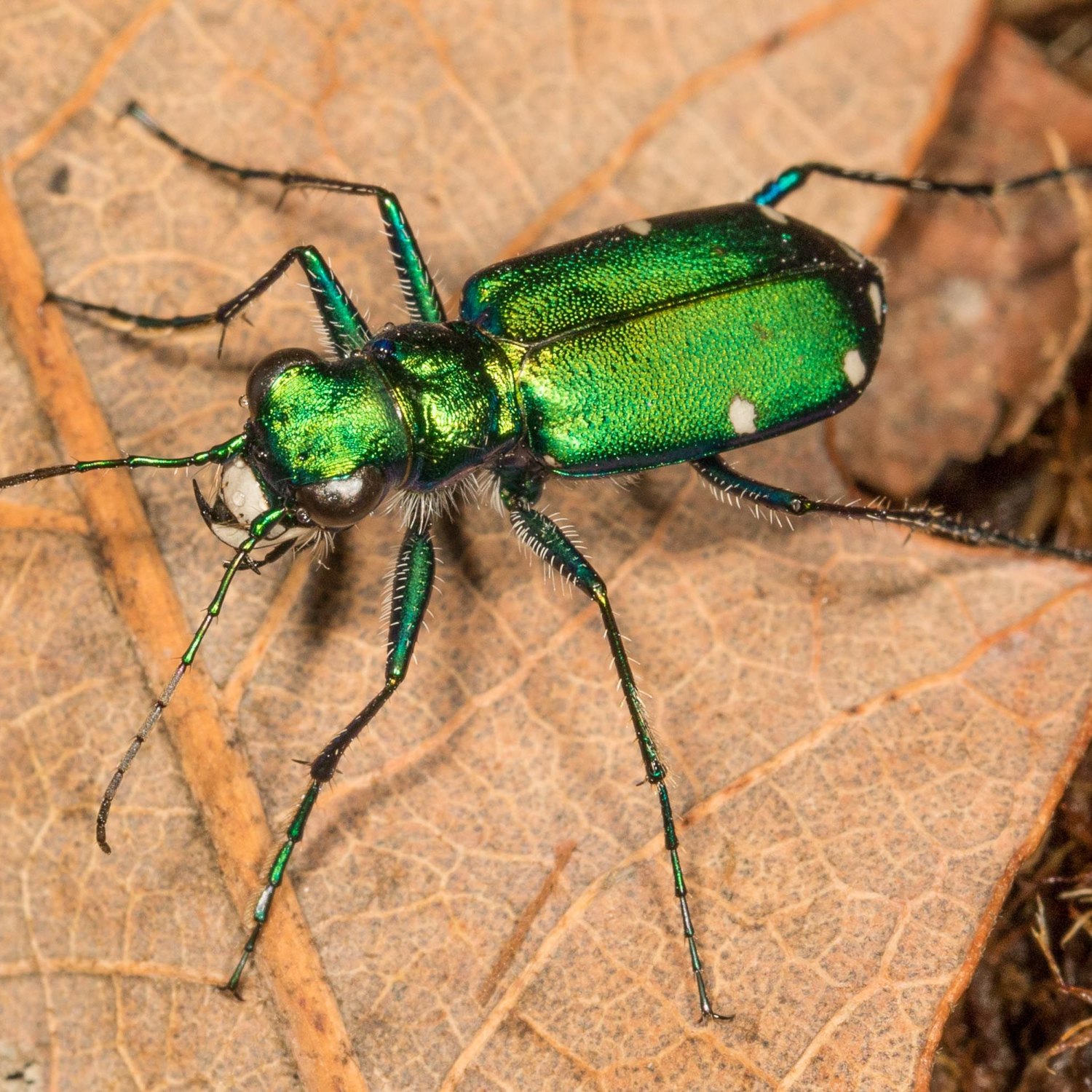
Tiger Beetle
1 to 2 inches
Tiger beetles are small but ferocious predators that can be found all over the world. This insect belonging to the Cicindelidae family has a slender and elongated body, measuring 1 to 2 inches in length. Watch out for these speedy creatures as they can run up to 5.6 mph, making them one of the fastest insects on the planet! #TigerBeetle #Cicindelidae #FastestInsect
Animal Details Summary:
Common Name: Tiger Beetle
Kingdom: Animalia
Habitat: Open areas such as sand dunes, sandy beaches, mudflats, grasslands, and forests
The Tiger Beetle, also commonly known as Cicindela, belongs to the Kingdom Animalia, Phylum Arthropoda, Class Insecta, and Order Coleoptera, making it a close relative of other insects such as beetles, ladybugs, and fireflies. However, what sets this insect apart is its predatory nature and its striking appearance.
Habitat and Distribution Tiger beetles are found in open areas such as sand dunes, sandy beaches, mudflats, grasslands, and forests. They are known to thrive in areas with loose soil or sandy ground, which allows them to burrow and create tunnels for their eggs. While they can adapt to various environments, they are commonly found in warm and dry regions.
Interestingly, the tiger beetle is a global insect, with a widespread geographical distribution. They can be found in various countries around the world, making them a truly diverse creature. Depending on the species, you can find them in North and South America, Europe, Asia, Australia, and Africa.
Feeding Method Tiger beetles are predatory insects, meaning they rely on capturing and consuming other living organisms for their survival Tapir. They have strong, elongated mandibles that enable them to seize their prey and bite through their exoskeleton. These powerful mandibles allow them to hunt and feed on a variety of creatures, including insects, spiders, and small reptiles.
One of the most fascinating aspects of the tiger beetle's hunting technique is its incredible speed. They have been recorded to run at a speed of 5.6 miles per hour, which is equivalent to five times their body length in one second. This incredible speed makes them one of the fastest insects in the world.
The tiger beetle's predatory nature has also played a significant role in controlling the population of other insects, keeping their numbers in check and maintaining balance in the ecosystem.
Appearance The tiger beetle's appearance is a sight to behold, making it a popular insect for collectors and nature enthusiasts. Their body length can range from 1 to 2 inches, with a slender and elongated body shape. However, what truly sets them apart is their bright and striking coloration.
Different species of tiger beetles have varying colors, with some sporting bright green, blue, or metallic shades. These vibrant colors serve as a defense mechanism, making them harder to spot by predators, and also attract potential mates. Some species even have iridescent colors, making them even more attractive.
Country of Origin and Location As mentioned earlier, tiger beetles have a global distribution, with various species found in different countries and locations. Some of the countries where they are commonly found include Argentina, Brazil, Colombia, India, Japan, Kenya, and the United States, to name a few. Each of these countries offers a unique habitat for the tiger beetle, allowing them to thrive and adapt to their surroundings.
Body Structure and Adaptations The tiger beetle's body structure is not only pleasing to the eye but also plays a crucial role in their survival. Some of their notable adaptations include their strong mandibles for hunting, as well as their long and powerful legs for running. These features, combined with their slender and elongated body shape, make them excellent hunters and give them an edge over their prey.
Their body also has adaptations that aid in thermoregulation, meaning they can control their body temperature. This allows them to adapt to different environments and thrive in areas with extreme temperatures.
In addition to their physical features, the tiger beetle also has keen eyesight, thanks to their large and prominent eyes. This gives them a 360-degree view of their surroundings, allowing them to be on the lookout for potential prey or predators.
Fascinating Behavior Aside from their physical features and hunting abilities, the tiger beetle also has some intriguing behaviors that make them stand out. For instance, some species are known to emit a clicking sound when disturbed or threatened, which can be quite loud.
They are also known for their territorial behavior, especially during mating season. Male tiger beetles will often engage in fierce battles over a potential mate, and the winner gains the right to reproduce with the female. This behavior highlights their fearless and competitive nature.
Conservation Status As with many other insect species, the tiger beetle also faces environmental threats that can potentially harm their populations. Habitat loss due to human activities, such as urbanization and deforestation, can impact their ability to thrive in their natural environment. Pesticide use and pollution also pose a threat to their survival.
It is essential to conserve these magnificent creatures and protect their habitats to ensure their survival for generations to come. As humans, we have a responsibility to preserve the delicate balance of nature and protect all species, including the tiger beetle.
In Conclusion The tiger beetle is a remarkable insect with outstanding features that make it a fascinating creature. From its hunting speed and abilities to its vibrant coloration, this insect has a lot to offer. Its global distribution and adaptability also showcase its resilience and survival skills.
By learning more about the tiger beetle, we can gain a deeper appreciation for the diverse and wondrous world of insects. Let us continue to explore and protect these unique creatures for future generations to enjoy.

Tiger Beetle
Animal Details Tiger Beetle - Scientific Name: Cicindela
- Category: Animals T
- Scientific Name: Cicindela
- Common Name: Tiger Beetle
- Kingdom: Animalia
- Phylum: Arthropoda
- Class: Insecta
- Order: Coleoptera
- Family: Cicindelidae
- Habitat: Open areas such as sand dunes, sandy beaches, mudflats, grasslands, and forests
- Feeding Method: Predatory
- Geographical Distribution: Global
- Country of Origin: Various
- Location: Various
- Animal Coloration: Bright colors such as green, blue, or metallic
- Body Shape: Slender and elongated
- Length: 1 to 2 inches
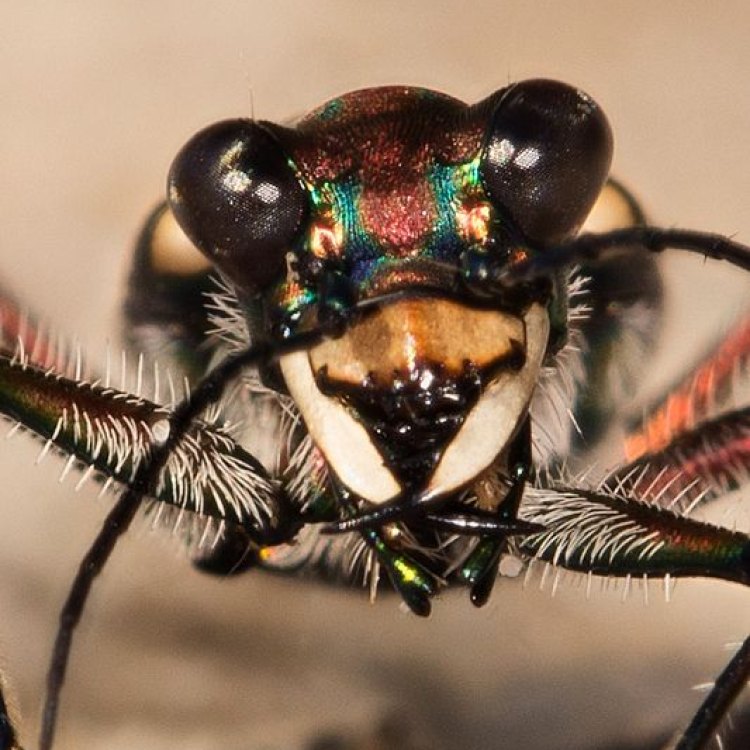
Tiger Beetle
- Adult Size: Small to medium-sized
- Average Lifespan: 1 to 2 years
- Reproduction: Sexual
- Reproductive Behavior: Mating occurs after a courtship ritual
- Sound or Call: Some species produce stridulation sounds
- Migration Pattern: Some species are known to migrate short distances
- Social Groups: Solitary
- Behavior: Aggressive hunters
- Threats: Habitat loss, pollution, climate change
- Conservation Status: Varies by species, but many are not considered threatened
- Impact on Ecosystem: Important predators of insects
- Human Use: No significant human use
- Distinctive Features: Large eyes, long legs, and powerful jaws
- Interesting Facts: Tiger beetles are among the fastest insects, capable of running and hunting prey at high speeds
- Predator: Birds, spiders, and other insects
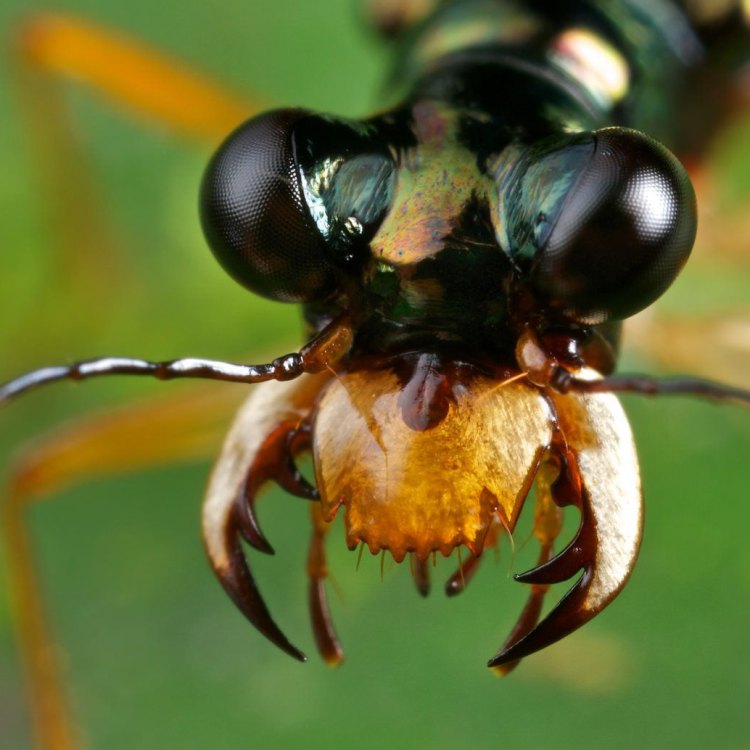
Cicindela
Tiger Beetle: Fierce Predators of the Insect World
Tiger beetles may be tiny, but don't let their small size fool you. These agile and ferocious insects are among the most impressive hunters in the animal kingdom. Found in various habitats across the globe, tiger beetles are a diverse group of insects known for their incredible speed, distinctive appearance, and important role in the ecosystem.Adult tiger beetles range in size from small to medium-sized, with the largest species measuring up to 5 centimeters PeaceOfAnimals.Com. Their average lifespan is relatively short, lasting only 1 to 2 years. Despite their short life expectancy, tiger beetles are well-equipped to thrive in their environment and fulfill their vital ecological role.
Tiger beetles reproduce sexually, with males and females engaging in a courtship ritual before mating. Males often show off their superior physical traits, such as bright coloration and large mandibles, to attract a mate. Once the female has been won over, the couple will proceed to mate, typically during the warmer months of the year.
One of the unique characteristics of certain tiger beetle species is their ability to produce stridulation sounds. These sounds, also known as "chirping," are created by rubbing body parts together and are often used as a form of communication or defense against predators. Not all tiger beetles are capable of stridulation, but those that can produce these sounds have adapted to use them in various ways.
Some tiger beetles are known for their short-distance migrations, during which they may travel a few kilometers to find new habitats or food sources Tarbosaurus. These migrations are usually triggered by environmental factors such as food availability, climate changes, or competition with other insects.
Despite their sociable name, tiger beetles are solitary insects that prefer to live and hunt on their own. They are highly active during the day, and their behavior is characterized by remarkable aggression towards their prey.
Tiger beetles are voracious predators, preying on a variety of insects, including ants, grasshoppers, and other small arthropods. They have earned a reputation for being skilled hunters, thanks to their impressive speed and agility. In fact, tiger beetles are known to be one of the fastest insects on the planet, capable of running at a speed of up to 9 kilometers per hour!
Their exceptional hunting skills are aided by their distinctive features, including large eyes, long legs, and powerful jaws. With their excellent eyesight, tiger beetles can spot their prey from a distance, and their long legs allow them to quickly chase after their prey. The powerful jaws, also known as mandibles, are used to crush and consume their prey.
However, despite their impressive abilities, tiger beetles are not without their threats. Like many other species, they face challenges such as habitat loss, pollution, and climate change. These factors can disrupt their natural habitats, making it difficult for them to find food and mate, ultimately impacting their survival.
The conservation status of tiger beetles varies by species. While some are considered threatened, many are not currently at risk. However, with the increasing threat of climate change and human activity, it's important to monitor and protect these fascinating insects.
Apart from their role in the ecosystem, tiger beetles do not have any significant use for humans. However, they are often studied by scientists to better understand their behavior, ecology, and evolutionary adaptations. These studies have led to some interesting findings about these incredible insects.
For instance, tiger beetles have been found to play a crucial role in controlling insect populations in their habitat. As efficient predators, they help maintain the balance of the ecosystem by controlling the numbers of their prey. Without tiger beetles, there could be a significant increase in insect populations, leading to potential imbalances in the food web.
Tiger beetles also have a unique relationship with their predators. While they are fierce hunters themselves, they are also preyed upon by birds, spiders, and other insects. To protect themselves from their predators, tiger beetles have evolved various defense mechanisms, including camouflage and speed. Some species also have the ability to secrete foul-smelling chemicals to deter predators.
In addition to their impressive hunting and survival skills, tiger beetles have captured the attention of researchers and nature enthusiasts with their interesting behaviors and adaptations. These include their ability to thermoregulate, or control their body temperature, by orienting themselves towards or away from the sun, depending on their needs.
Tiger beetles are also known for their unique reproductive strategy, where females will often lay their eggs in pre-made burrows or dig their own. The eggs are then guarded and protected by the female until they hatch. This behavior is known as parental care, which is not commonly seen in insects.
The extraordinary physical abilities and behaviors of tiger beetles have also inspired artists, writers, and photographers. Many nature enthusiasts seek out these insects in their natural habitats, eager to capture their beauty and ferocity on camera.
In conclusion, tiger beetles may be small, but they are undoubtedly mighty creatures. Their impressive speed, sharp hunting skills, and significant role in the ecosystem make them a fascinating subject of study and admiration. As we continue to learn more about these insects and their remarkable capabilities, it's crucial to protect their habitats and preserve their place in the natural world.
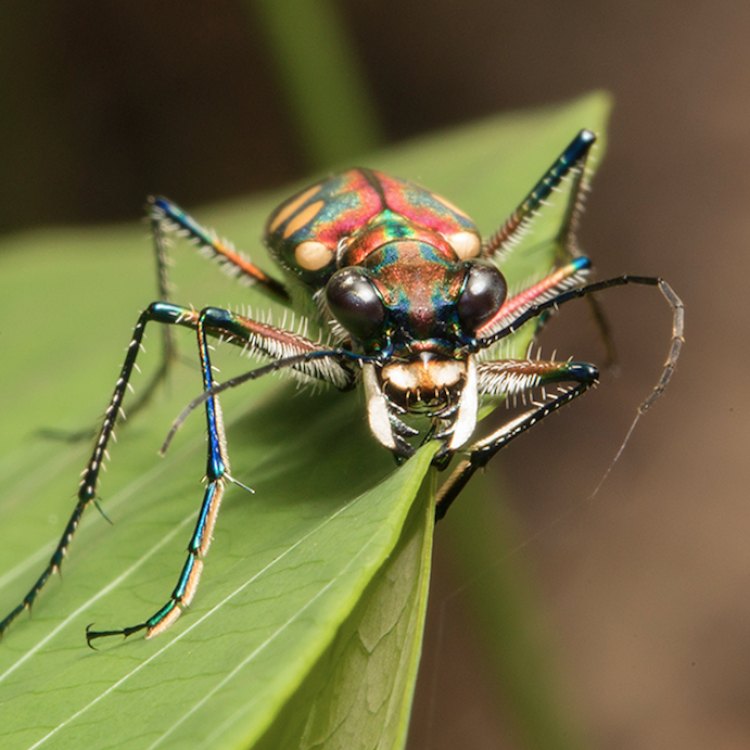
Disclaimer: The content provided is for informational purposes only. We cannot guarantee the accuracy of the information on this page 100%. All information provided here may change without prior notice.










